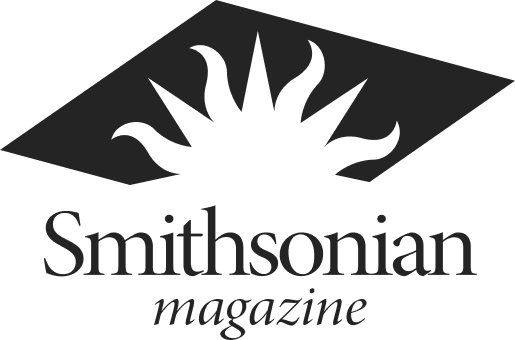How Indigenous Communities Preserve and Practice Heritage at the 2024 Smithsonian Folklife Festival
The annual festival returns to the National Mall to celebrate Indigenous traditions that span continents and generations
:focal(1786x1174:1787x1175)/https://tf-cmsv2-smithsonianmag-media.s3.amazonaws.com/filer_public/98/85/988552d6-fba8-492a-bcae-0a9b91e90001/gettyimages-1241422319_1.jpg)
Several generations and thousands of miles separate Oren Lyons and the members of Imilla Skate.
Chief Lyons is 94 years old. He is the Faithkeeper of the Turtle Clan of the Onondaga Nation, a life-long lacrosse player, a retired professor at the University of Buffalo and an advocate for Indigenous causes.
Imilla Skate is an Indigenous skateboarding collective from Bolivia. Its members, all young women, wear traditional polleras—billowing and colorful skirts—as they roll into halfpipes, flip down concrete steps and teach people how to skate.
Despite their differences, Lyons and Imilla Skate will come together as some of the hundreds of Indigenous artists, performers, storytellers and activists converging on the National Mall between June 26 and July 1 for Indigenous Voices of the Americas, this year’s Smithsonian Folklife Festival.
“Seeing them together to talk about how sport and engaging the body speaks to identity, that can happen here in a way that it might not happen somewhere else,” says Sabrina Lynn Motley, director of the Folklife Festival at the Center for Folklife and Cultural Heritage.
In the past, Folklife Festivals have typically been composed of multiple programs. Last year, programming on living religions in the U.S., the culture of the Ozarks, and Kazakh traditions and rituals took place simultaneously.
But this year, there is only one focus: the living traditions of Indigenous people. Despite its singularity, it is an expansive topic, linked to the 20th anniversary of the National Museum of the American Indian and sweeping across continents and time.
“It deserved to have its own space,” Motley says. “To see that sort of rich diversity in this festival is really important.”/https://tf-cmsv2-smithsonianmag-media.s3.amazonaws.com/filer_public/65/6e/656eefee-db97-4493-8eb9-c72398a35b41/sff2022_07-01_pv_0002_copy.jpg)
Living traditions
Since its first iteration in 1967, the Folklife Festival has always favored the intimate and open exchange of songs, practices, designs, recipes, stories and ideas. For culture to be preserved, it must also be allowed to breathe, shift and change shape, little by little. In Motley’s mind, we should not discriminate between “emerging traditions” and what we think of as “traditionally traditional.”
“Relevance,” one of the four themes guiding this year’s festival, gets at this tension. Seemingly, for something to be relevant, it must have meaning in the present. Something irrelevant might be stuck in the past or flung too far into the future.
But at the Folklife Festival, the distinctions between past, present and future are less sharp—or less meaningful. Tradition merges them all into “an ongoing swirl of consciousness,” as Motley puts it.
That swirl links contemporary creators and storytellers like Lyons and Imilla Skate to ancestral practices that have not faded away. “These traditions and forms,” Motley adds, “are always relevant.”
The close collaboration between the National Museum of the American Indian and the Center for Folklife and Cultural Heritage puts the static, tangible objects and images of cultural heritage in conversation with the intangible, living traditions and practices coming to the National Mall.
Visitors will be able to filter between the museum, which houses artifacts like a pair of intricately quilled Métis leggings, and the National Mall, where they can dance to the winding melodies of performers like the Gaudry Boys, a Métis fiddle group from Manitoba.
Through the links between museum and festival, Indigenous heritage is both preserved and practiced; it is both observed and participated in. “It’s a very special opportunity to see those things connected,” Motley says.
Building and reclaiming community
Part of the necessity of this year’s festival is highlighting how Indigenous people of all ages are consciously “working to reclaim and reinvigorate practices and language” that are threatened, Motley says.
“Reclamation” and “resistance,” two other themes, hint at the importance of coming together within Indigenous communities to exchange traditions, as well as the tactics of saving them.
“That’s really important to recognize and to keep that sense of identity and those roots,” Motley continues. “And then also to be really honest about when those roots are being frayed.”
This year, the idea is for Indigenous communities to share traditions and practices with each other, while also forming a broader, Pan-American Indigenous community.
As Smithsonian Secretary Lonnie G. Bunch III writes, the festival “aims to create encounters between people and groups who might never otherwise cross paths.”
Non-Indigenous people are likewise included in these encounters, but organizers work to maintain a balanced relationship between the communities that the festival aims to platform and the audience that comes to witness the spectacle. “We’re invited into that conversation,” Motley says, “but we’re going to hear differently.”
With people from vastly different backgrounds and circumstances, that openness and connection is part of the unique beauty of cultural exchange and appreciation.
“It’s not like you’re appropriating somebody else’s culture,” Motley says. “But you’re sort of learning and then thinking, ‘OK, yeah, my grandmother did that. She didn’t do that exactly, but she did something similar.’”
She adds, “Now I understand what that meaning was for her in a different way than I might have, had I not had that experience with somebody else who’s from halfway around the world.”
/https://tf-cmsv2-smithsonianmag-media.s3.amazonaws.com/accounts/headshot/eli2.png)
/https://tf-cmsv2-smithsonianmag-media.s3.amazonaws.com/accounts/headshot/eli2.png)

